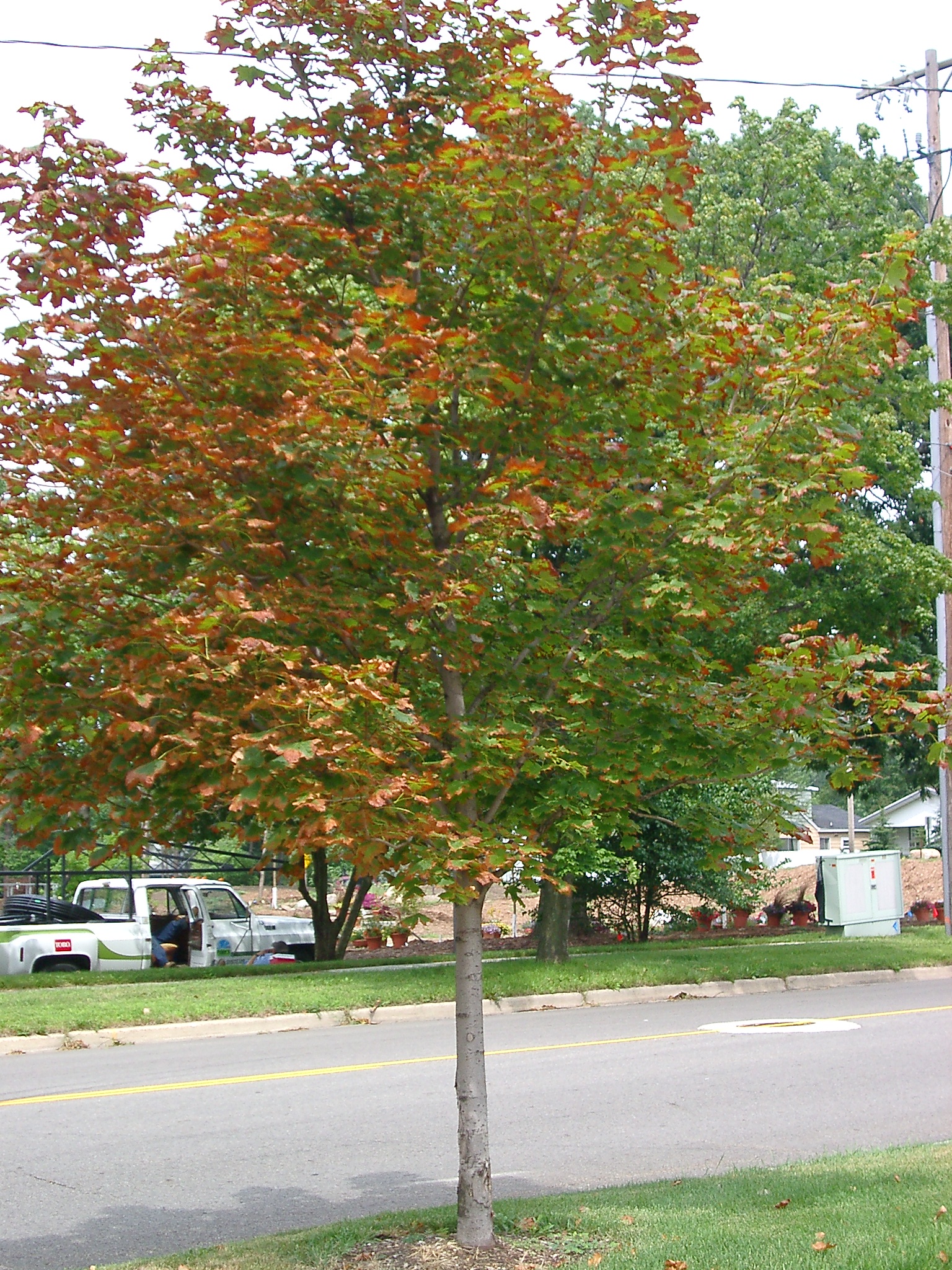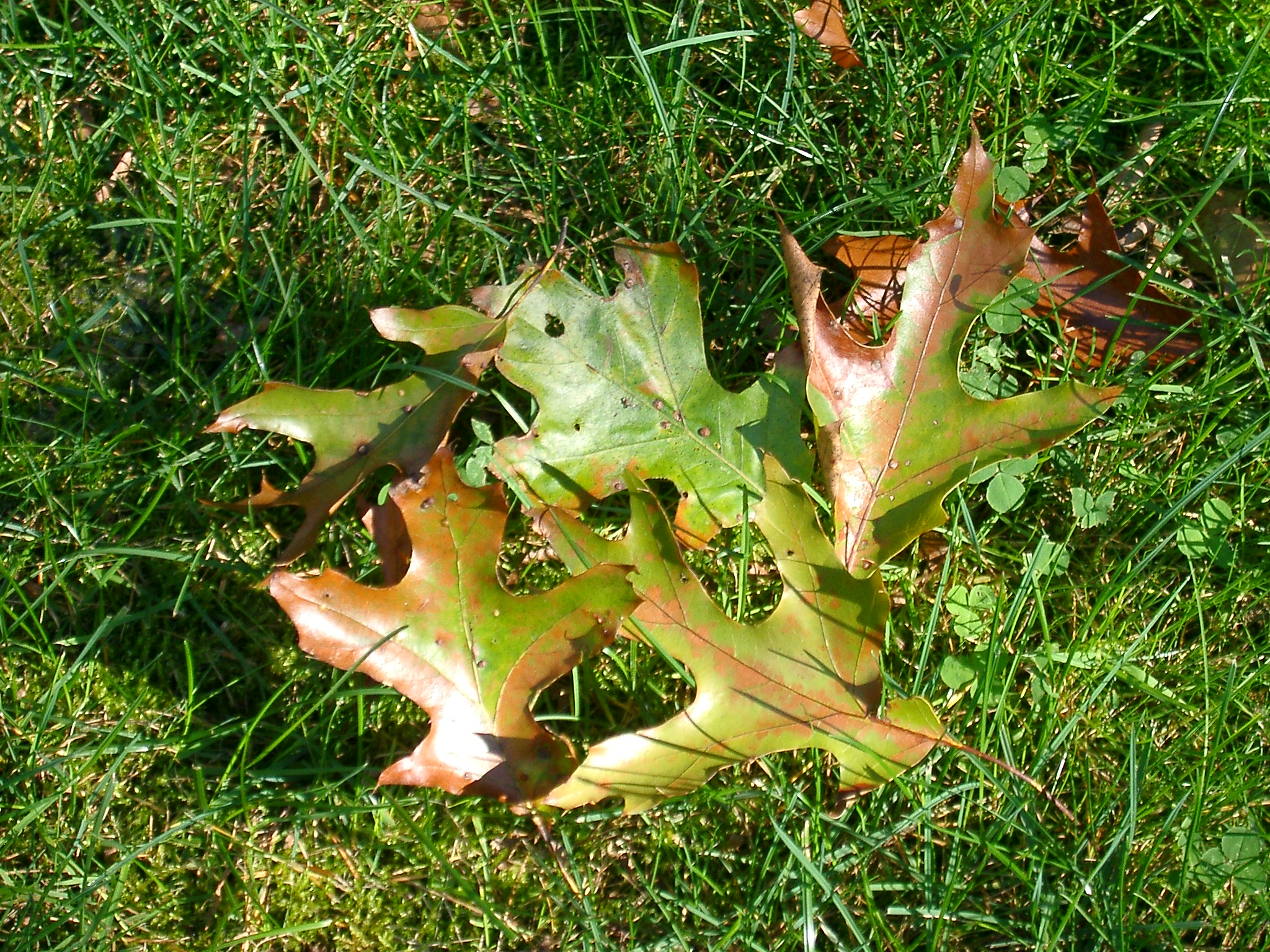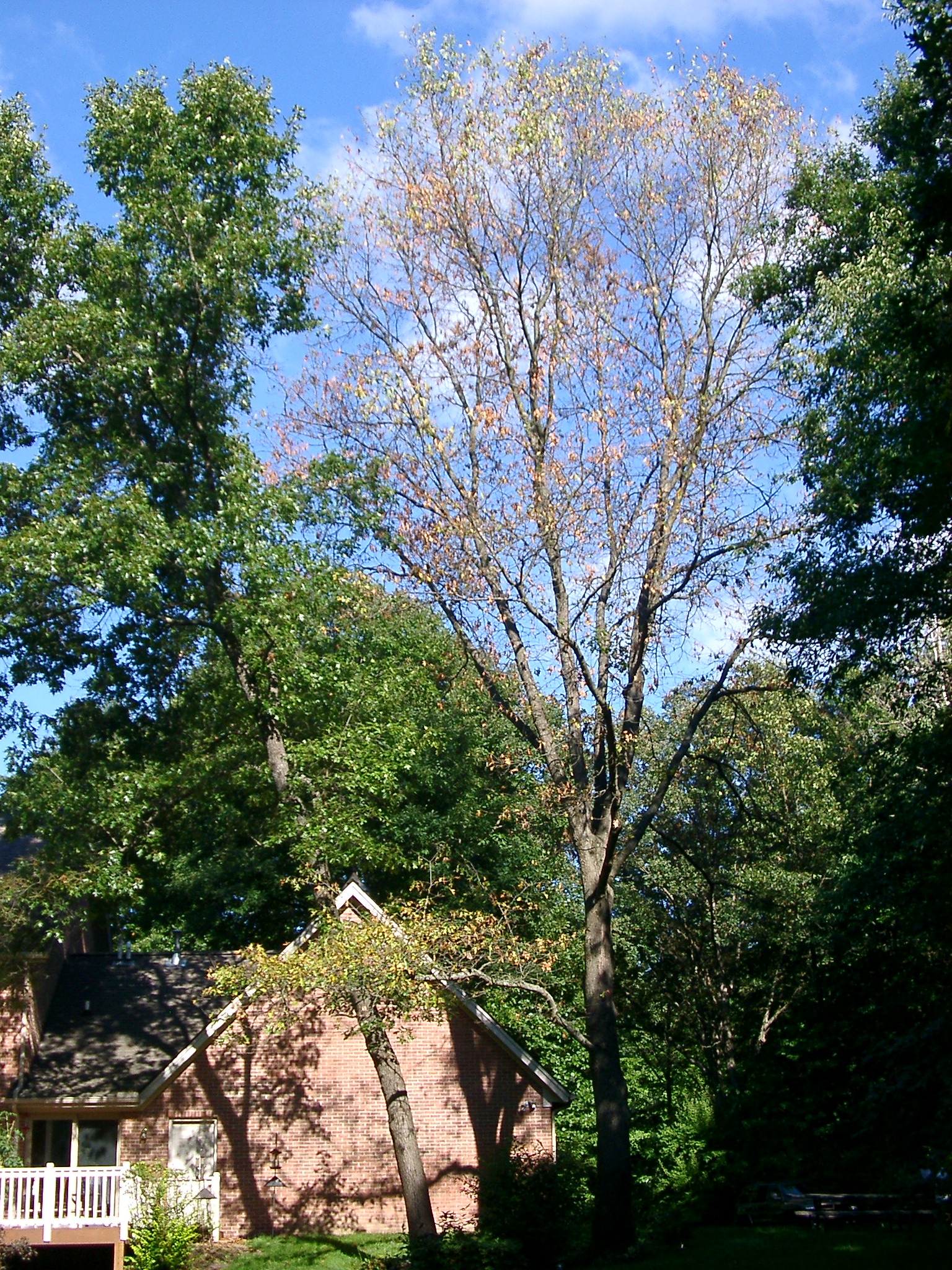Leaf scorch or oak wilt: What’s plaguing my tree?
Browning of oak leaves may be caused by environmental stress rather than oak wilt.

In recent weeks, Michigan State University Extension has received a number of questions from homeowners about trees with browning or scorching of leaves. For owners of oak trees, there is the added fear that the tree may have oak wilt, a disease that can quickly spread to decimate entire stands of mature oaks. In many cases, the problem was not oak wilt but leaf scorch, which involves the discoloration and death of leaf tissue beginning at the outer edge, and sometimes progressing inward toward the main veins of the leaf (Photo 1).
Frequently, leaf scorch results from environmental factors. Factors can include drought stress, over-fertilization or lack of certain essential nutrients, like potassium or magnesium. Many areas in Michigan experienced mild to moderate drought this summer, which coupled with high temperatures creates the perfect environment for leaf scorch.
Much of the water taken up by a tree exits through the leaves in a process called transpiration, which is important for cooling leaves on hot days. When transpiration cannot sufficiently cool a leaf, the leaf tissue may be directly damaged by high temperatures. This damage may be uniform throughout the tree canopy or localized to sections of the tree (Photo 2). Leaves exposed to direct sunlight near the top of the tree may show browning because the radiant heat of the sun can cause the temperature at the leaf surface to be many degrees higher than that of the surrounding air. Leaves near roads or other surfaces that reflect or absorb and radiate heat may also be affected (Photo 3).

When high temperatures directly cause leaf scorch in otherwise healthy trees, the tree is likely to fully recover without intervention, assuming that adequate water is available in the soil. Most trees require 1 inch of water across the entire root zone (or at least under the tree canopy) per week during hot weather, either in the form of rain or through supplemental irrigation. To “calibrate” your irrigation, you can place a small container with straight sides (like a tuna can) under the soaker hose or in the path of the sprinkler you are using, and time how long it takes to get 1 inch of water.
As noted, leaf scorch may be directly caused by high temperatures when the pace of cooling through transpiration cannot keep up with the cooling demands. Leaf scorch may also point to problems with the roots. The fine root hairs that draw up water and nutrients may be damaged or killed by drought or flooding, or by pests and diseases. When the root system is compromised, the tree cannot take up enough water to resupply what is lost to transpiration and to cool the leaves on hot days, leading to leaf scorch. Damaged roots also make it difficult for a tree to take up the essential nutrients needed for growth and tissue maintenance and repair, which can also contribute to leaf scorch.
Xylella is a bacterial pathogen that can also cause leaf scorch symptoms in oak and other hosts. But this disease is rare or non-existent in Michigan (view Xylella distribution map). MSU Plant and Pest Diagnostics currently uses a molecular test to detect the pathogen in scorched foliage and has not detected Xylella in Michigan oaks.
So, what about oak wilt?
Oak wilt is a highly transmissible disease caused by a fungal pathogen, Bretziella fagacearum. Like leaf scorch, it causes browning and wilting of oak leaves. It is much more of a problem for red oaks, which can be distinguished from white oaks by the shape of their leaves. Red oak species have sharply pointed tips at the ends of the lobes on the leaf, while white oaks have rounded lobes.

In red oaks, leaves in the upper crown are the first to become discolored and wilt, followed by leaves lower in the crown. Like leaf scorch, the leaves brown first around the margins, from the tip downward toward the base of the leaf (Photo 4). Unlike leaf scorch, oak wilt often causes browning of half or more of the leaf area at once, including veins. Infected leaves soon fall, nearly defoliating the tree in as little as three weeks (Photo 5). In white oaks, the disease proceeds slowly, often beginning with the death of single branch, followed by other branches over one or more years.

Oak wilt is highly transmissible, both through interconnections between the roots of neighboring oak trees (root grafts), and by oak bark beetles that carry fungal spores from infected trees as they travel among trees. These beetles are rapidly attracted to fresh wounds in trees, which is why we recommend that oak trees not be pruned until at least mid-July, and ideally not until Nov. 1, or after the first hard freeze. For the most current information on the spread and management of oak wilt in Michigan, please visit michiganoakwilt.org.



 Print
Print Email
Email